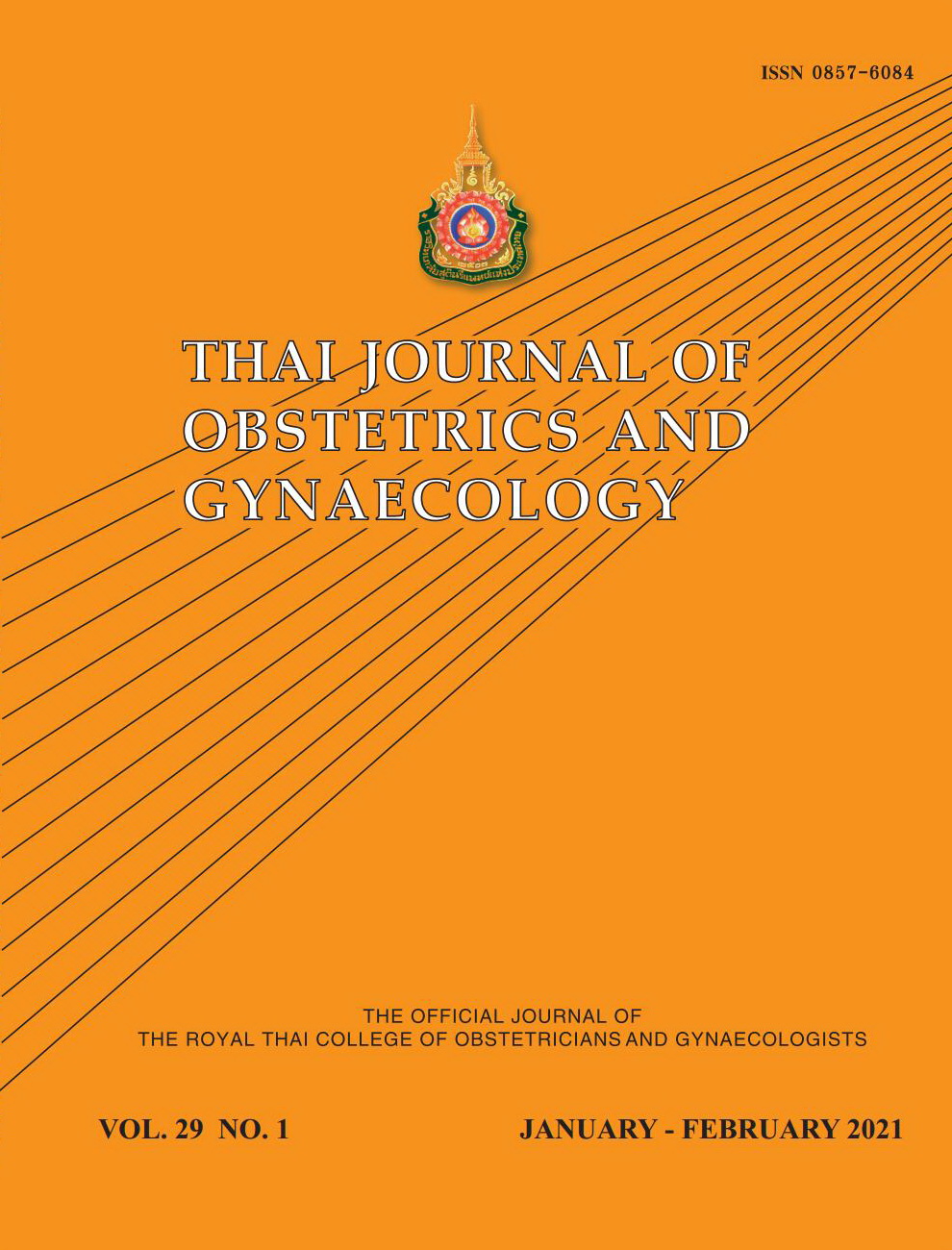Elimination of Congenital Syphilis: What’s New for Obstetricians in the 2020 Thai National Guideline?
Main Article Content
Abstract
The goal of eliminating congenital syphilis in Thailand is to reduce new cases from 50 per 100,000 live births in 2015 to 5 per 100,000 live births in 2020. This remains a challenge because the incidence of syphilis in pregnant women is rising in many regions of Thailand. Therefore, the Ministry of Public Health of Thailand has revised the national guideline to control the situation by increasing the screening for Thai people with high risk of getting the disease; early detection and treatment of pregnant women with syphilis; suggesting pathological examination of placenta as well as identification of Treponema pallidum; enhancing the corporation between obstetricians and pediatricians; and emphasizing the post-treatment follow-up including contact tracing.
Article Details
References
Peeling R, Mabey D, Kamp M, Chen X, Radolf J, Benzaken A. Syphilis. Nat Rev Dis Primers 2018;3:17073.
Rungmaitree S, Mokkhamakkun C, Phongsamart W, Lolekha R, Wittawatmongkol O, Lapphra K, et al. Incidence of and factors associated with congenital syphilis at a tertiary hospital in bangkok, Thailand. Southeast Asian J Trop Med Public Health 2019;50:1-12.
Chayachinda C, Thamkhantho M, Charoenwatanachockchai A. Elimination of congenital syphilis in Thailand: What can be done during antenatal care? Thai J Obstet Gynaecol 2016;24:66-72.
Panchalee T, Chayachinda C, Panyakat W, Chen M, Quinones-Garcia V, Pernsoongnern P. Characteristics and neonatal outcomes of teenage pregnant women diagnosed with syphilis at Siriraj Hospital. Siriraj Med J 2018;70:298-301
World Health Orgaization. WHO guidelines for the treatment of Treponema pallidum (syphilis)2016 (Accessed 1 September 2020) Available from: https://apps.who.int/iris/bitstream/handle/10665/249572/ 9789241549806-eng.pdf;jsessionid=E4EBFE6D87B56B19990EDBDD174029DA?sequence=1.
Workowski KA, Bolan GA, Centers for Disease C, Prevention. Sexually transmitted diseases treatment guidelines, 2015. MMWR Recomm Rep. 2015;64(RR-03):1-137.
Janier M, Hegyi V, Dupin N, Unemo M, Tiplica G, Potočnik M, et al. 2014 European guideline on the management of syphilis. J Eur Acad Dermatol Venereol 2014;28:1581-93.
Gomez G, Kamb M, Newman L, Mark J, Broutet N, Hawkes S. Untreated maternal syphilis and adverse outcomes of pregnancy: a systematic review and meta-analysis. Bull World Health Organ 2013;91:217-26.
Boonchaoy A, Wongchampa P, Hirankarn N, Chaithongwongwatthana S. Performance of chemiluminescent microparticle immunoassay in screening for syphilis in pregnant women from low-prevalence, resource-limited setting. J Med Assoc Thai 2016:119-24.
Galvao T, Silva M, Serruya S, Newman L, Klausner J, Pereira M, et al. Safety of benzathine penicillin for preventing congenital syphilis: a systematic review: PLoS One 2013;8:e56463.
Nathan L, Bawdon R, Sidawi J, Stettler R, McIntire D, Wendel GJ. Penicillin levels following the administration of benzathine penicillin G in pregnancy. Obstet Gynecol 1993;82:338-42.
Weeks J, Myers S, Lasher L, Goldsmith J, Watkins C, Gall S. Persistence of penicillin G benzathine in pregnant group B streptococcus carriers. Obstet Gynecol 1997;90:240-3.
Zhu L, Qin M, Du L, Xie R, Wong T, Wen S. Maternal and congenital syphilis in Shanghai, China, 2002 to 2006. Int J Infect Dis 2010;14S:e45-e8.
World Health Orgaization. WHO guidelines on syphilis screening and treatment for pregnant women2017 (Accessed 1 September 2020) Available from: https://www.who.int/reproductivehealth/publications/rtis/syphilis-ANC-screenandtreat-guidelines/en/.
Thamkhantho M, Chayachinda C, Yindeear-rom P. Prevalence of incomplete post-treatment follow-up visits in female patients with syphilis and the associating factors. J Med Assoc Thai 2020;103:163-7.


